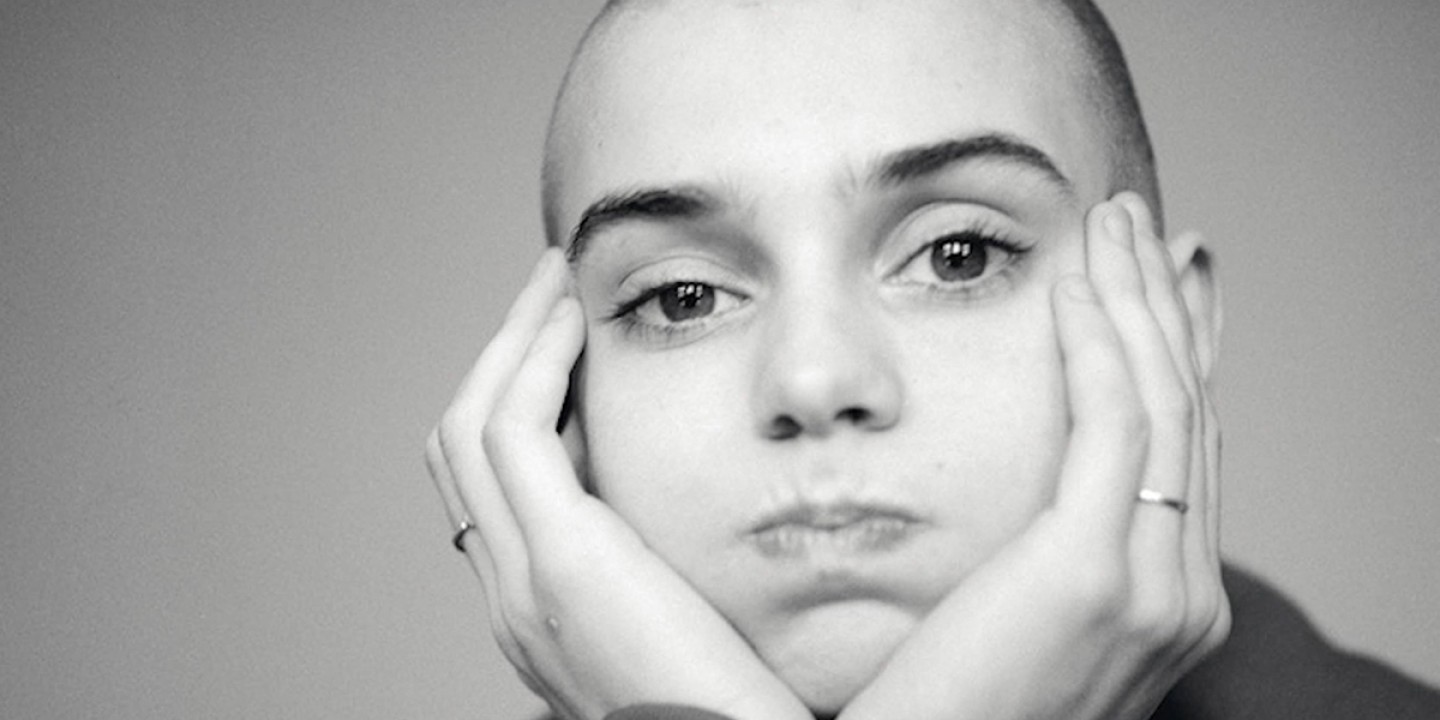Is Sinéad O’Connor a secular saint?
A new documentary positions the fiery iconoclast as a prophet ahead of her time.

When record executives urged Sinéad O’Connor to grow her hair long and wear more feminine clothing, she shaved her head instead. Ironically, this only accentuated her ethereal features—it made her look iconic. According to legend, St. Clare of Assisi shocked her family by shaving her beautiful long hair to follow St. Francis in a life of poverty and service. St. Clare is offered up to Catholic girls as a model of the rejection of vanity and worldly status.
When the same record execs urged O’Connor to abort her pregnancy, saying that a child would interfere with her ability to tour and promote her first record, she refused. She wore cropped shirts to reveal her pregnant belly to fans and critics. St. Gianna Molla refused an abortion, and she is honored as the patroness of the unborn, a Catholic pro-life movement icon.
Read our latest issue or browse back issues.
When O’Connor sang an a cappella version of Bob Marley’s “War” on Saturday Night Live and tore up a picture of Pope John Paul II as an act of protest against child sexual abuse in the Catholic Church, she urged those watching to “fight the real enemy.” St. Catherine of Siena, who hurled herself at the corruption of the church in her own time, scolded the pope and called powerful clergy “agents of Satan.” She’s a doctor of the church.
A new documentary by director Kathryn Ferguson focuses on these legendary moments of O’Connor’s early career in order to present her as a secular prophet ahead of her time. But the details of these stories remind me, intentionally or not, of the lives of Catholic saints.
In Nothing Compares, Ferguson focuses on the period from 1987—when, at age 19, O’Connor released her first album, The Lion and the Cobra, and rose to international fame—to 1993, when, after her SNL appearance, she was effectively exiled from the entertainment industry and labeled a heretic.
It would be many years before the world had to reckon with how right she was to call attention to John Paul II’s complicity in the abuse of thousands of children. In the film, O’Connor says that she was determined to honor the contract she made with the Holy Spirit, a line I also noted when I read her memoir, Rememberings. Like so many now-sainted women, she has been misunderstood, maligned, and driven half mad in her lifetime.
Many of the details in Nothing Compares were familiar to me from Rememberings, but I was newly haunted by the images Ferguson chose to accompany the voice-over narration supplied by O’Connor and a select group of her friends and collaborators. They show how very, very young she was when she became a media sensation. It’s as if Ferguson chose the archival material to highlight the fiery O’Connor at her most luminous and delicate. One can almost imagine a nimbus framing her shorn head.
And then there’s her otherworldly voice and astonishing stage presence. The live footage reminds us that she was not simply a brat or an agitator who liked mixing it up; she was also shockingly talented.
Aside from a few shots of holy statues and churches and a heartrending photograph of young O’Connor in her First Communion dress, the film treats Catholicism as little more than the toxic backdrop to the star’s Dublin childhood. Her mother was spiritually, emotionally, and physically abusive. By the time she was 14, O’Connor was a petty thief and truant who lived in a home for troubled girls—attached to one of the notorious Magdalene workhouses for unwed mothers and “mentally ill” women. There she learned to play guitar and awed her teacher’s wedding guests with her rendition of Barbra Streisand’s “Evergreen,” a charming detail amid a dark origin story that seems fit for a Broadway musical adaptation. But it’s not clear from the film how deeply religious O’Connor always was—or how devout she remains. A convert to Islam, she now wears the hijab.
The church loves to claim artists once they are no longer breathing and able to unsettle us. Andy Warhol, for example, has been the subject of countless think pieces about his Catholic imagination and devotion—pieces that would have been unthinkable in his lifetime. But Warhol also loved the pope, whom he considered “the ultimate superstar.” It’s hard to imagine that O’Connor will one day be added to the pantheon of revered Catholic celebrities trotted out as proof of the church’s distinctive imprint on the arts—Ferguson’s footage includes Catholics smashing up cassettes of her music and threatening to smack her on sight—but I wouldn’t put it past us. We sainted Joan of Arc after burning her as a witch.
In the meantime, Nothing Compares gives us a secular hagiography to inspire anyone who would speak hard truths in a world that doesn’t want to hear them. Ferguson takes pains to show O’Connor as blazing a trail both for young women activists—she includes images of Greta Thunberg and Parkland shooting survivor X González speaking to crowds—and for women in the music industry. But I left the movie unconvinced that Billie Eilish and Ariana Grande are following in O’Connor’s footsteps. The film is aptly titled: there is simply no one like Sinéad O’Connor, still at large and potentially dangerous, still prone to speaking uncomfortable truths and living the disquieting life of a woman who will not be controlled.






